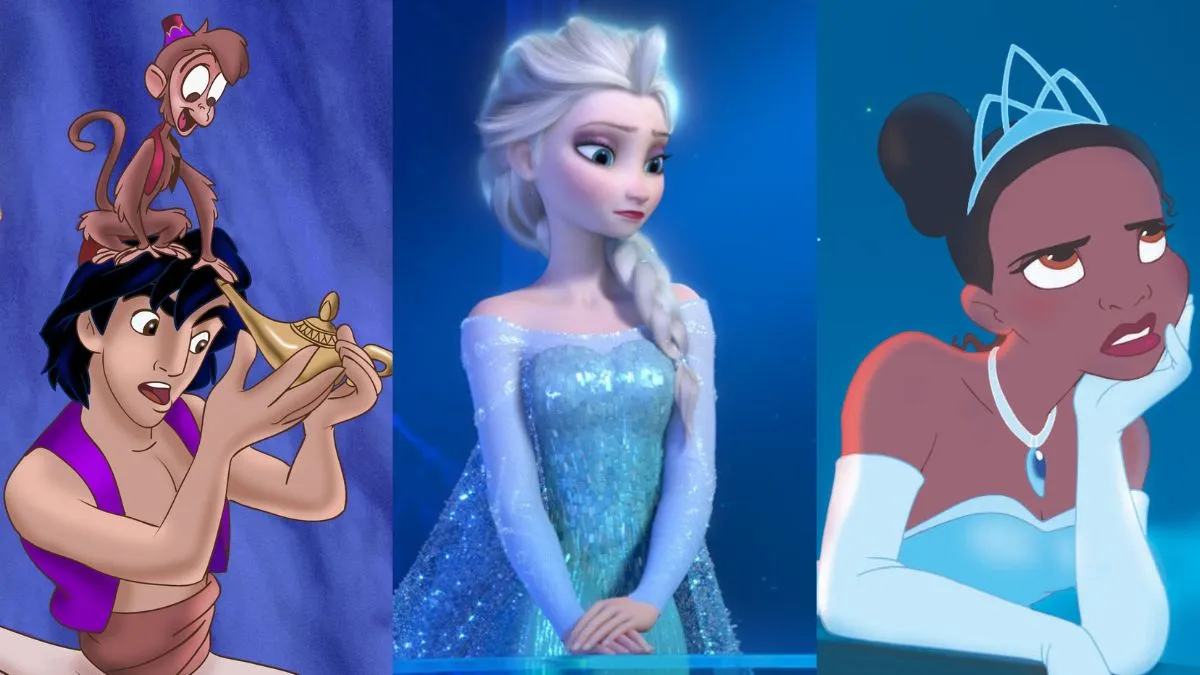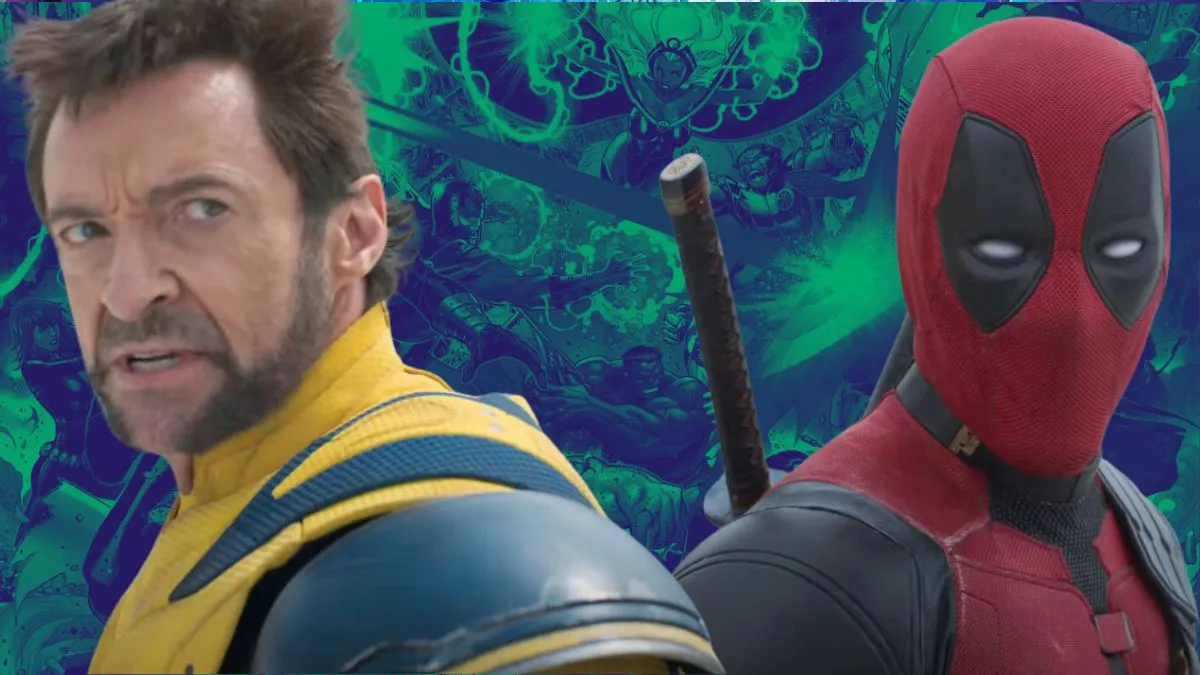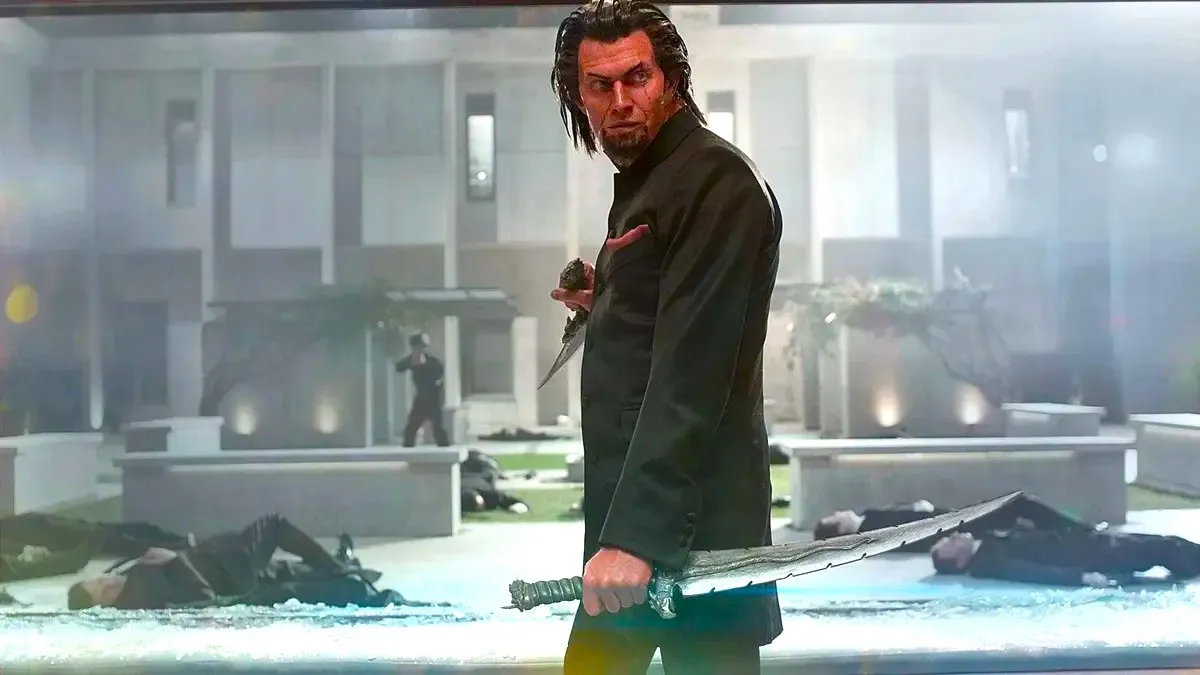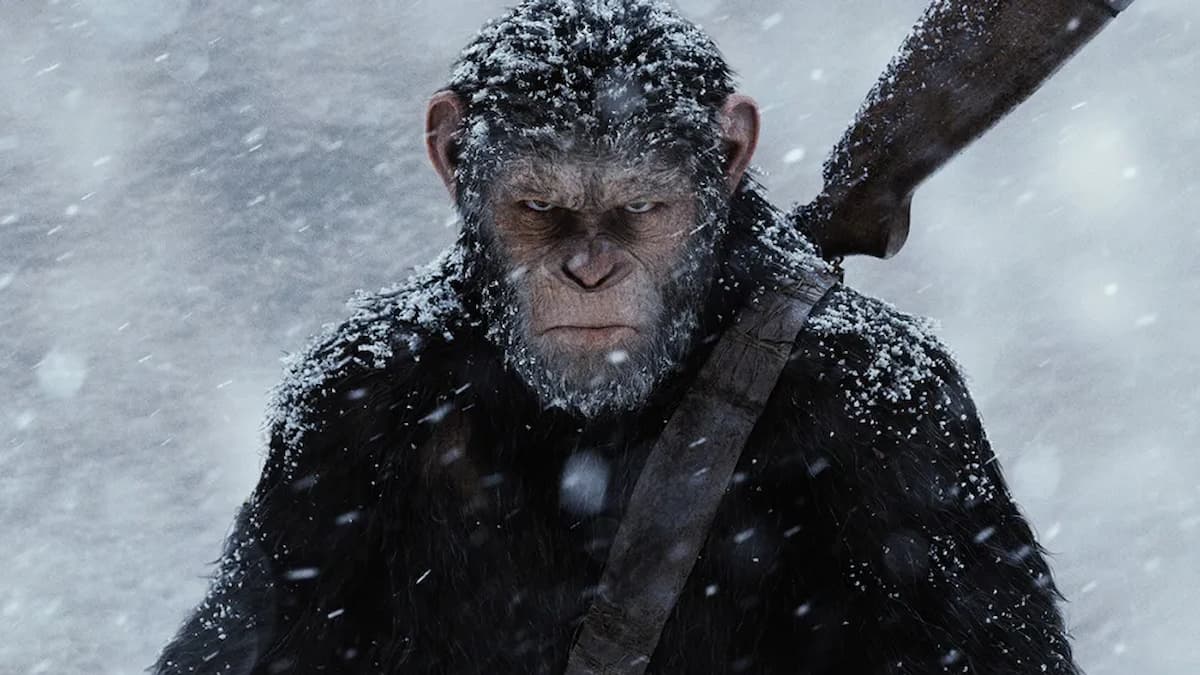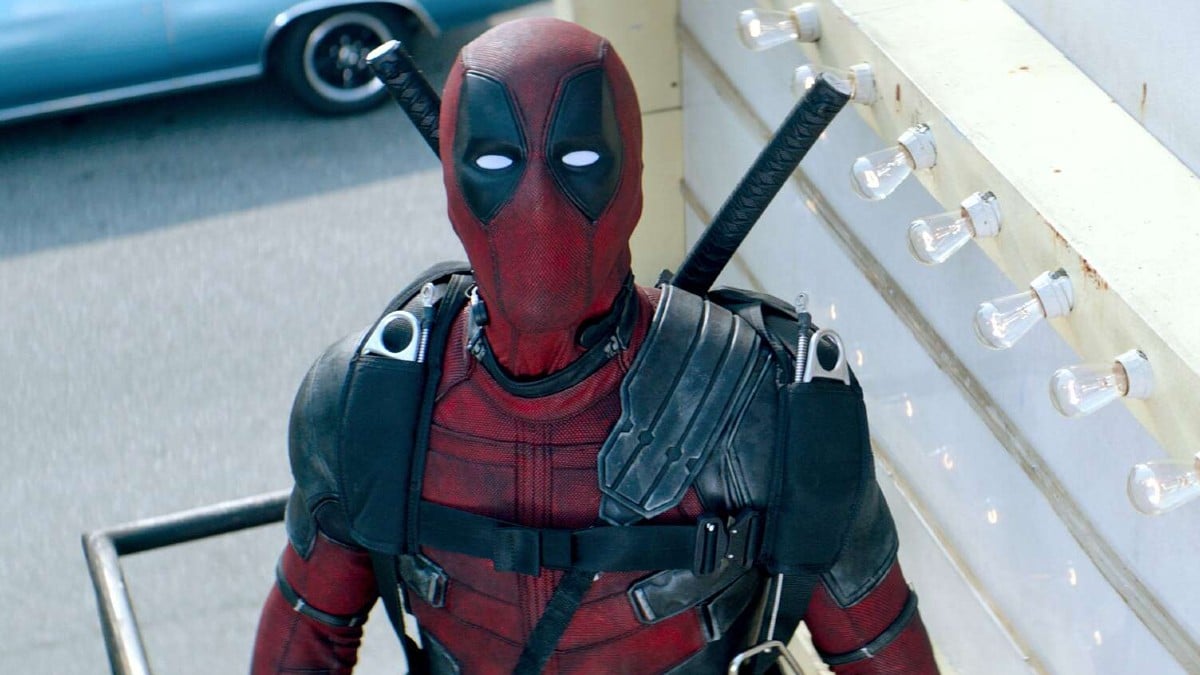
Children and young adults are always warned about the dangers they face from people they don’t truly know, an important life lesson that rang true in last year’s acclaimed drama thriller, Martha Marcy May Marlene. The film, which featured a stunning breakout performance from lead actress Elizabeth Olsen and helmed by first-time director Sean Durkin, is now available on Blu-Ray and DVD.
While Martha Marcy May Marlene shows the actions people take when trying to break free from a cult, and the psychological trauma they experience as a result, the signs of when someone initiating another person into a cult is just as important. The movie’s prequel, the short Mary Last Seen, which Durkin directed and wrote, is included on the feature film’s Blu-Ray and DVD and showcases just that.
Mary Last Seen follows the title character, played by Alexia Rasmussen, who’s traveling on a road trip with her boyfriend, Watts, portrayed by Brady Corbet. While Mary thinks she’s going on an innocent vacation with Watts, she comes to realize that his true goal is to cut her off from her life all together. Mary is introduced to Watt’s cult family, and discovers that initiating her was the sole purpose of their trip.
Durkin and Rasmussen were joined by Mary Last Seen‘s cinematographer, Drew Innis, and producer, Antonio Campos, on February 20, at a screening and Q&A of the short film. At the event, which was held at the Elinor Bunin Munroe Film Center Amphitheater in New York’s Lincoln Center, the four discussed the process of filming the short. During the Q&A, which was also streamed on Twitter, they also spoke about how they researched cults, and how strongly audiences have responded to both films.
Check it out below.
Question: It’s not surprising to anyone who’s seen Martha Marcy May Marlene to see a film like this, and to see how it introduces you to that world. What was the process of coming up with this idea?
Sean Durkin: I had been writing Martha for a few years. In 2009, we were talking about making it, but the film wasn’t really ready. I hadn’t directed a short in a few years, and I wanted something to send out with the script, that was representative of what we wanted to do.
In writing Martha, I had done all this research into how you get into cults, and what the induction process is like. So the idea of how a girl gets to be in a cult, that’s how we came up with Mary.
Q: Once you did the short, and played it at a couple of film festivals, was it easy for you to explain to people how you wanted to go to that next step?
SD: It never really came up like that.We explained to people that we’re all directors and producers, and it’s hard for people to wrap their heads around it. But I think it gave people the confidence that I could actually direct something. It was a good tool in raising money for a feature.
Q: Now that you have all made a few films, you can see certain similarities stylistically, in the way that you get into someone’s head. Instead of telling where they are, you let viewers live in the characters’ world. Drew, can you talk about working on the visual aspect to give the characters an extra psychological dimension?
Drew Innis: Well, we didn’t really talk too much beforehand. There wasn’t a whole lot of prep work. I think we may have talked about some films, but we didn’t watch any.
It was a lot of finding things out on set. With the scene in the woods, when we woke up that morning, it was raining. We had a lot of problems with the weather, and we kept re-arranging shots because of the weather. It was like, what do we have to work with today?
Q: Alexia, you play a role that’s relatively similar to what we see Elizabeth Olsen in Martha, in basically that you’re a woman who’s being pushed around by someone who’s playing mind games. How much did Sean inform you on what’s going on?
Alexia Rasmussen: I was fully informed. (laughs) I think less is more, with the subtly of the character. I think that helped me. It made me think of her as maybe one of many girls brought to the cult.
Q: How much of a backstory did you have worked out?
AR: Brady and I talked about it, and how he probably had to put some work into this. He had to get her to date, and be with, him, and trust that he can get her to this place. So that was probably the furthest that I went.
Q: Sean, you had researched cults before you began writing Martha. Many people talk about researching the parallels before writing a screenplay, but this seems like it would be difficult. How do you research being inducted into a cult without being inducted into one yourself?
SD: I started to understand the process on two levels. I understood it on an academic level, understanding the signs. Then on another level, speaking to people and understanding their emotions.
I think with Mary, I recognized a few key things, like being cut off from society and technology, the loss of sexual ambition and being removed from society. The steps seem to be consistent, no matter what cult I was studying, to get people through. I thought the short could show those examples.
Q: You brought Martha to the Sundance Film Festival, and it was really well received. You got a distribution deal with Fox Searchlight. As it got a bigger life in the public world, was there anything that caught you off guard, in the way that people respond to a story like this?
Antonio Campos: When we went to Sundance, it all kind of caught us off guard. We knew the ending of Martha was going to be a big question mark for a lot of people. We didn’t realize how frustrated people were going to be. But I think it worked to everyone’s benefit that it ended that way, because it created a discussion.
SD: Yeah, I didn’t know the ending was going to be such a talking point. We always felt it was a natural end, with where the character was at.
AC: That was the type of ending that we think movies have. It was never, oh, maybe the ending should be a little bit clearer. It was just like, oh, that’s the end. That’s always how our endings develop.
Q: Do you feel that both Martha and Mary can be used to teach about cults, for example, in a psychology classroom?
SD: I don’t know, I never studied it in that way. I guess it could. We heard that there was a cult expert.
AC: He escaped a cult, and is a deprogramer. He referred to Martha as a very accurate portrayal.
SD: He requested a copy, so that he could show it. So I guess it’s a possibility. We’ve had a lot of feedback from all the screenings that I’ve gone to. People talk to me about their experiences in a cult.
So I guess it could, but it was never a goal that we set out with. We just wanted to follow this story, and make sure it was accurate.
Q: With both Mary and Martha, there are a lot of close-ups on the faces, and a sense of claustrophobia. How much was on paper, and how much did the two actors bring to it?
SD: The script is there, but you make choices of who to cast, based on their qualities. I’m there to guide what they bring. The script is just like that, but it’s John (Hawkes, who plays Patrick in Martha) speaking at that level. It’s very collaborate, but it’s all very laid out in the script.
Q: There are bathroom scenes in both films, which are both very unnerving.
DI: The interesting thing about the bathroom scene in Mary was that there was a news story there. We were just looking for a bathroom, and we just pulled up to this bathroom.
SD: The interesting thing was that Antonio, (producer) Josh (Mond), Drew and I went (location) scouting on Monday and Tuesday. Tuesday night, Lexi and Brady got there, and Wednesday, Thursday and Friday we shot. We found everything on the spot, so we were just driving around to these locations. We had one camera, and were going to these locations, and didn’t ask for permission, except for the farm.
DI: I just ran in there to see if we had enough light. I said, okay, let’s go. Production had to move across the street, because the station had seen us loitering. They thought we were a news crew.
AC: A few weeks before, a woman went crazy while driving her kids and the kids of her friends. She drove the wrong way, up by the Catskills.
SD: That was the bathroom, it was never known for sure, but it was thought that was the last rest stop she was seen before going the wrong way. So they were really sensitive.
We were scouting, and they thought we were a news crew. They said, we told you last week that you can not shoot.
AC: They don’t mind if you have sex in the bathroom, they just don’t want you to shoot it.
Q: Sean,being that Martha was your first feature, what would you have done differently if you could go back?
SD: I went to NYU (where he attended film school) the other day, and I was a guest speaker in a class. I was talking about the process, and what it was like making short films at NYU. I was thinking about how stressful it was, and there was so much stuff going on. All of that stuff is great. All the stress, screw-ups and everything you think is terrible, is all part of the process.
So I wouldn’t change anything. Everything you go through during your first film is what it is, and it all adds to the experience and process.
Q: How much of the cinematography was purposeful, and how much was it due to if it was raining?
DI: Rain doesn’t necessarily influence the cinematography. Every scene had purpose. We found a lot of that purpose on set everyday. The nature of it being low budget, a lot of scenes just happen.
Like the scene where they were smoking cigarettes at night. We needed something to fill, and we said, let’s just do this.
SD: Drew was like, the light is beautiful on the field, let’s just shoot something. It wasn’t planned. It’s funny, it’s not what you think of when you think shoots with purpose. But I think even if you find it on the day of shooting, we’re choosing shots that have feelings that you want.
Q: Alexia, were you in both films, as Mary was about going into the cult, and Martha was about leaving it?
AR: I’m not in Martha, Mary was from a different world. A lot of the people who were in that original family in Mary weren’t in Martha.
SD: You were shooting something else at the time of Martha.
AR: I was shooting something else, but not as good. (laughs) Regrettably.
Q: Antonio and Sean, how do your directorial styles differ?
SD: I think it’s hard for us to answer. We really grew up together, and have been working together for 10 years. I shot Antonio’s short films in school, and we’ve been producing together. We don’t write together, but he’s the first person I show things to, and vice versa. I don’t know how to define the differences.
AC: If the question was to compare directorial styles, it would be a totally different question. It’s a question I personally don’t want to examine, because I want it to be as organic as possible. At this point in my life, there are a set of guidelines that I do follow.
We both react, and are sensitive, to the same things in life. We’re excited about the same movies and performances.
Brady is a dream actor to work with. He’s also a filmmaker, so he also thinks about story, and thinks about the cameras and is aware of them. But he doesn’t let them get in his way. On top of that, he’s game to go to dark places.
SD: Speaking of game, there’s a scene in Mary, to Brady and Alexia’s credit, where we really wanted them to jump into the water. We drove around, and heard there was a reservoir. So we drove out there, and the farm said we’re not allowed to go out there. So we get there, and the guy said just look out for a white van driving around. The van makes sure no one goes in the water.
We get there, and drive up to the bridge, and it’s at least 4o feet. We looked over the edge, and I felt that if the actors were going to jump, we should do it ourselves. I said, okay Drew, try it out. (laughs)
DI: We thought about swimming out to see if there were boulders, but it was at least 100 yards.
SD: Drew said, if I’m going to jump, you’re going to have to shoot it. He jumps, and I’m about to shoot it, and I get scared and go back to the car. (laughs) I completely missed the shot.
Then when Alexia and Brady were about to jump, we said we were going to shoot it, but we missed it. We asked if they would do it, and they said sure.
AR: It was a huge rush. I had done something like this before, but Brady hadn’t. He did it perfect, and I did it wrong, and we only did it once.
DI: We had like three cameras going. The logistics of coordinating it were crazy. There was a camera from the bridge. I had a camera, and was treading water for like five minutes. I couldn’t see them, so I had to listen for their dialogue.
I was right under the bridge, but I didn’t want to get the bridge in the shot. But I had to make sure I was far enough so they wouldn’t land on my head.
Q: Watching the films, it was powerful to watch Patrick’s actions. Did you come up with a backstory?
SD: I did, but I don’t find that helpful to share, unless someone really wants to know. When writing, I came up with certain things that influenced certain choices. But John and I didn’t talk too much about it.
That concludes our interview, but we’d like to thank Sean Durkin, Alexia Rasmussen, Drew Innis and Antonio Campos for talking to us. Make sure to check out Mary Last Seen on the Martha Marcy May Marlene Blu-Ray and DVD, now available in stores.


